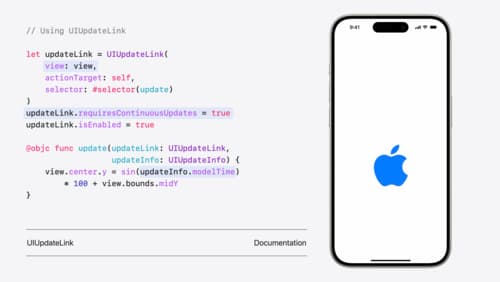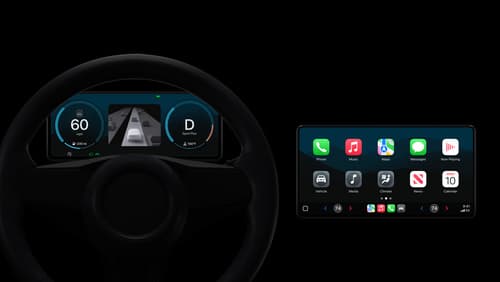UIKit rendering engine
Asked on 2024-10-03
1 search
The UIKit rendering engine has seen significant updates, particularly in its integration with SwiftUI. This year, Apple has focused on enhancing interoperability between UIKit and SwiftUI, allowing for more seamless integration of views written in both frameworks. Gesture recognition has been decoupled from UIKit, enabling the use of gesture recognizers in SwiftUI view hierarchies, even for views not directly backed by UIKit. Additionally, animations have been separated from SwiftUI, allowing developers to set up animations on UIKit or AppKit views and drive them with SwiftUI, including custom animations.
For more details on these updates, you can refer to the session Platforms State of the Union (38:32) where these enhancements are discussed. Additionally, the session What’s new in UIKit (03:35) covers SwiftUI animations in UIKit, providing further insights into the new capabilities.

What’s new in UIKit
Explore everything new in UIKit, including tab and document launch experiences, transitions, and text and input changes. We’ll also discuss better-than-ever interoperability between UIKit and SwiftUI animations and gestures, as well as general improvements throughout UIKit.

Meet the next generation of CarPlay architecture
Dive into the architecture for the next generation of CarPlay. Learn how your vehicle system works with iPhone to create a single cohesive experience that showcases the best of your car and iPhone. Learn how UI is rendered and composited, and explore ways to configure and customize a special experience for each vehicle model. This session is intended for automakers and system developers interested in the next generation of CarPlay.

Create custom visual effects with SwiftUI
Discover how to create stunning visual effects in SwiftUI. Learn to build unique scroll effects, rich color treatments, and custom transitions. We’ll also explore advanced graphic effects using Metal shaders and custom text rendering.
